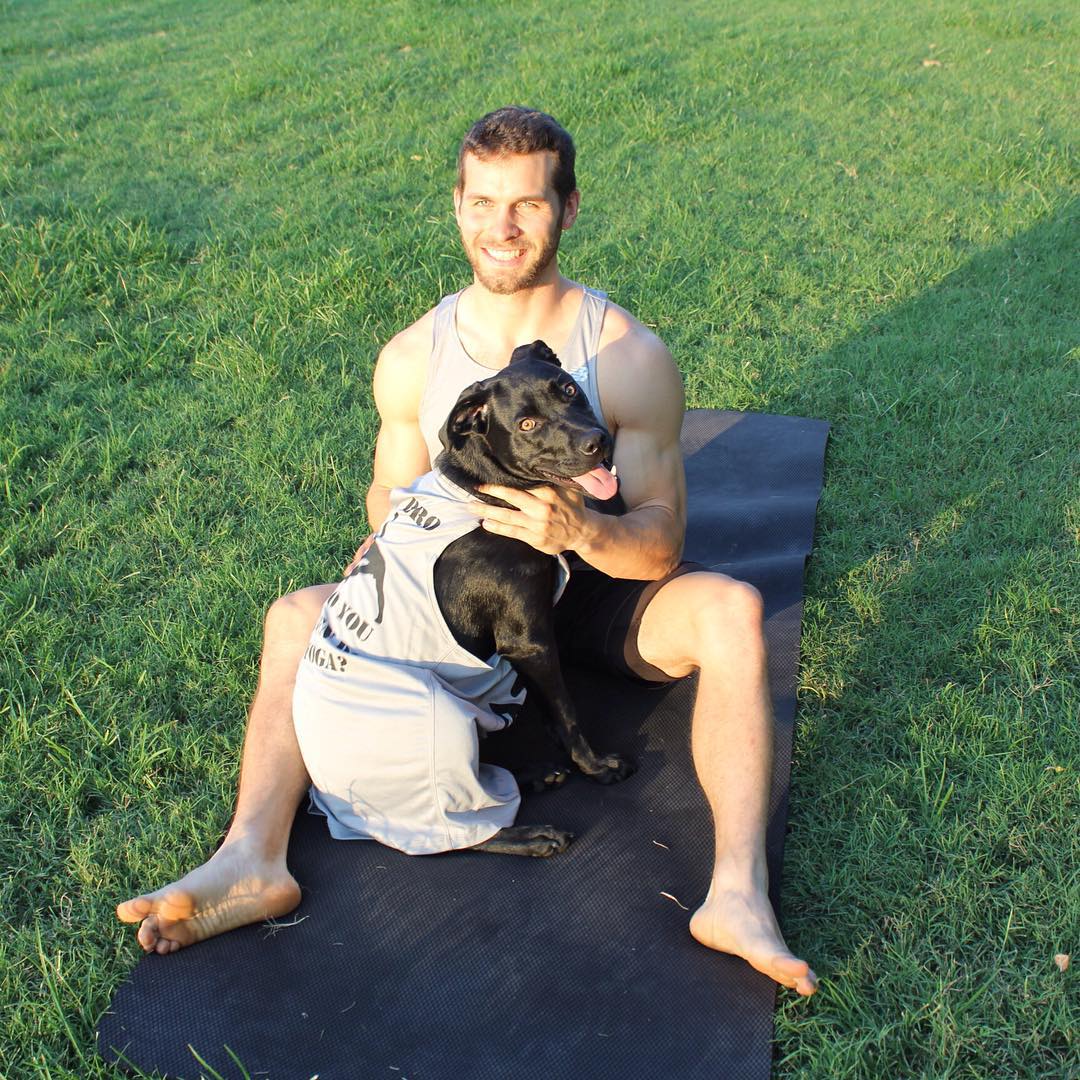Now that we’ve determined your why, it’s time to create some goals for yourself. These goals are a reflection of the “why” you discovered in the assignment from Week 1. However, it’s important to understand that some goals are more powerful than others.
This lesson covers the following in order to help you create powerful, effective fitness goals:
- Intrinsic vs. Extrinsic Goals
- Connecting your goals to your why
- SMART goals (Specific, Measurable, Achievable, Relevant, & Time-bound)
For the purposes of this program, I would like you to create 1-month goals using the formula described here. You’re welcome to create medium and long-term goals to get started, but these goals should be adapted to 1-month time frames. For example, you can make it your goal to lose 50 pounds, but you then need to create a weight loss goal for a 1-month period.
Intrinsic vs. Extrinsic Goals
The difference between intrinsic and extrinsic goals is simple. In-trinsic (internal) goals are based on yourself. Ex-trinsic (external) goals are measured by external factors.
Intrinsic goals are inherently satisfying because they focus on innate psychological needs, such as competence, autonomy, growth, and relatedness. Examples include improving your movement abilities, decreasing day-to-day pain in daily physical tasks, increasing your physical ability so you can engage in more physical tasks, learning a new technique, and improving your posture. These goals can be achieved without others’ approval or comparing yourself to others – they are entirely dependent on the standards you create for yourself.
Extrinsic goals are external – they are focused on obtaining rewards and positive evaluation from others, and often include comparing yourself to others. Examples of this include improving the way you look so more people notice you, winning a competition, or doing a “better pose” than somebody else. These are powerful motivators, but are ultimately dependent on others.
Choosing intrinsic goals gives YOU control; while choosing extrinsic ones gives OTHERS control. This distinction is important because we are happier and feel secure when we feel we have more control over our own lives. Conversely, we aren’t as happy when we have less control.
When you have goals that require the approval of others in order to be satisfied, you give up your control of the situation. You’re handing over the control to someone else. This makes your satisfaction dependent on whether or not THEY approve of your body, rather than what YOU think of yourself.
Conversely, if we choose a specific, intrinsic goal (such as losing 8 pounds in one month, learning to do crow pose for 30 seconds, or reducing your reliance on caffeine) this shifts the power to YOU. It makes you responsible for the outcome, instead of somebody else – and this makes us happier!
As we create fitness goals for ourselves, it is important to frame our fitness goals in intrinsic terms, rather than extrinsic ones.
Tying the goal back to your WHY
The next part of creating powerful goals goes includes tying the goal back to your why, which you developed in Week 1 of Be The Better You.
Framing your fitness goals in a way that it makes it easy to connect them to your why helps create clarity. Your actions have purpose. It’s the same way a government uses a constitution to create and approve new laws, or a company uses a mission statement to make decisions about strategy or new products. Without a guiding vision, there is no reference point for action, and this results in doing less to fulfill your goals.
For some goals, the connection between your why and your fitness goals might seem obvious. But drawing this clear line from fitness goals back to your motivation for fitness helps make it so you never get halfway through your workout and ask yourself, “Why am I doing this?” It helps tie every exercise, healthy meal, and hours spent doing things you might not want to do back to your why, and inspires your actions with motivation.
S.M.A.R.T. Goals
Now that we’ve you understand the importance of intrinsic goals which can be tied back to your why, the final part of creating powerful goals is refining our goals to be specific, measurable, achievable, relevant, and time-bound. This is commonly referred to as the “SMART” goal.
1. S for Specific
Be as specific as you can. Explain what the goal is and why you’re doing it.
Note from Dean: This should be a summary of the main idea and driving factors for wanting to achieve this goal. These reasons should tie back into your why.
Example: I want to gain 5 pounds in muscle in 2 months because I know that strengthening my shoulders will only become more difficult as I grow older, and I want to be healthy in my shoulders so I don’t have to worry about common injuries that prevent me from being physically autonomous.
2. M for Measurable
You should be able to measure your goal with specific units of measurement. If you don’t know how to measure a particular aspect of your fitness, learn how.
Use specific units of measurement. “Some”, “a few”, or “better” don’t count. We want exact numbers. If you’re not measuring in weight, inches, seconds, or minutes, then grade yourself on a feeling of 1-10.
Note from Dean: You also need to understand the techniques or best practices for measuring your particular goals. If you are unsure of how to measure a certain aspect of your fitness, think of the information sources you need to utilize in order to learn to do so.
Example: My goal is to gain 5 pounds of muscle in 2 months. That means I should gain 2.5 pounds in 1 month. I can measure this because I will not be doing anything to significantly change my lower-body routine, and will be able to tell the difference in how my upper-body looks. I can also measure my thighs and glutes to make sure the changes are not happening there.
Revised: As I complete this section of the goal-setting process, I recognize that unless I am not willing to visit a performance testing facility or the pay costs associated with such tests. Therefore, I am changing my goal to add 5 pounds to my total weight, while maintaining a low body fat percentage. I can also measure muscle gain using measuring tape in the appropriate areas. I will utilize fitness resources such as testosterone nation to learn these measuring methods, and also take upper-body fitness tests to gauge my strength.
3. A for Achievable
- Can you achieve the goal?
- Is it realistic?
- Do you have what you need in order to achieve the goal?
Note from Dean: It’s much better to set a more modest goal at first; one which you can build upon for later. Setting a reach goal to start and not achieving it only reinforces the subconscious thought that you are incapable of reaching your goals.
Example: Based on what I’ve read, building 2.5 pounds of muscle in one month is 100% achievable, especially with adequate sleep, good diet, and the right exercise. Since I’ve been doing yoga for years now, it is unlikely I’ll be able to build sufficient muscle with yoga alone, which means I’ll need access to weights. I have weights in my office as well as a gym in my condo building, which means I’ll have access to the equipment I need. I also have the knowledge of the proper exercises and how to build a workout plan.
4. R for Relevant
Is the goal relevant to your life right now? Better yet, does the goal resonate with you?
Eating more vegetables, sleeping better, or reducing stress levels or all great, but unless it’s a goal that’s really important to you then you won’t be excited about it. This portion of the smart goal has already been covered by the second part of our creating powerful goals process, which focuses on tying the goal back to your why.
Note from Dean: Another way to think about – this goal should make you excited. It should make you a tingle a bit when you read it aloud. If it doesn’t, go back to the drawing board.
Example: My why is to be physically autonomous with my body so I can do the things I physically want to do, because movement is enjoyable to me and the feeling of control I have over my body to do the things I want to do contributes to my feeling of powerful, enabling me to accomplish the things I want to in life so I can feel fulfilled and happy.
My goal of strengthening my upper-body is relevant because it is one part of my body that I have not focused on in a very long time. I do not do a lot of overhead pressing with my upper-body because I am scared of being injured, and in order to overcome this fear and improve my physical autonomy with my shoulders I need to devote my time to a program focused specifically on doing so.
5. T for Time-bound
Your goal needs to have a specific amount of time attached to it. Whether it’s 2 weeks, 1 month, or 6 months, you need to know.
Note from Dean: For our purposes, I’d like you to set a goal to accomplish within the month. Seeing or measuring the results of your hard work is an important component of keeping yourself motivated, and you should be able to notice a difference within 1 month – even if it’s small!
Example: This goal is to build 5 pounds of muscle in 2 months, or 2.5 pounds of muscle per month. This satisfies the requirement of being time-bound.
Finally, I would like to mention creating powerful goals is just the first part. The next part is creating the plan. By creating powerful goals based on intrinsic rewards, able to be connected to our motivation, and fulfilling the time-proven SMART formula, we create a solid foundation for the plan to fulfill our goals.
Assignment: Create a Powerful, Achievable 1-Month Goal
Part 1: Spend 5 minutes writing up as many fitness-related goals as you can think of. Each goal should have a 1-month time frame (or shorter) attached to it.
Part 2: From your list of goals, choose the intrinsic goal which is most important to you, and then write it out based on the criteria below.
Note from Dean: Just as Week 1 formed a basis for Week 2 of Be The Better You, writing our your SMART goal is the basis of the plan to fulfill the goal. Write out all of your thoughts as you complete this assignment, being sure to anticipate potential challenges involved in creating the plan. (Next week we’ll actually create the plan!)
- How the goal relates to your motivation to work out (your why) from lesson 1.
- Specifications for the goal. Use the SMART formula.
- S – Specific – As specific as possible. “Some” or “a few” is not specific. Get down to exact numbers.
- M – Measurable – You need to be able to tell whether or not the goal has been accomplished. Inches, pounds, seconds, or minutes are great. “Feel better about myself” or “eating healthier” are not.
- A – Achievable – It should stretch your abilities, but not exceed them. It’s better to set a smaller, less dramatic goal then setting a huge, but unlikely one.
- R – Relevant – Is the goal relevant to your life right now?
- T – Time-bound – For this assignment, choose a goal with a 1-month time frame.
Write out everything!
Other Important Notes:
- If your goal is weight loss, it’s more effective to measure your progress in body composition, rather than weight loss. Unless your new fitness routine is diet and sleep-focused, you’ll be building muscle as you lose weight. This often results in frustration if you’re measuring your progress solely based on a scale, since you can’t measure fat loss vs. muscle gain alone.
- Make sure the measurement criteria for your goals match your budget. It’s inexpensive to measure weight or the size of your chest, but relatively expensive to to measure muscle mass in one particular part of your body. Make sure you have the appropriate resources to measure your results, or choose a different method of measurement.
- One type of goal not discussed was the goal of establishing healthy habits. This is easier to measure and will lead to greater long-term success than goals that have an end (such as losing 10 pounds, reaching a certain body fat percentage, etc).
How to Set Goals You Can Actually Complete
About the author, Dean Pohlman, Founder & CEO of Man Flow Yoga, Author of Yoga Fitness for Men, Expert on Yoga Fitness for Men.
Looking for non-spiritual, yoga for men workouts?
Learn More About Man Flow Yoga and how it can help you with your fitness goals:
 Join Today for Instant Access!
Join Today for Instant Access!


